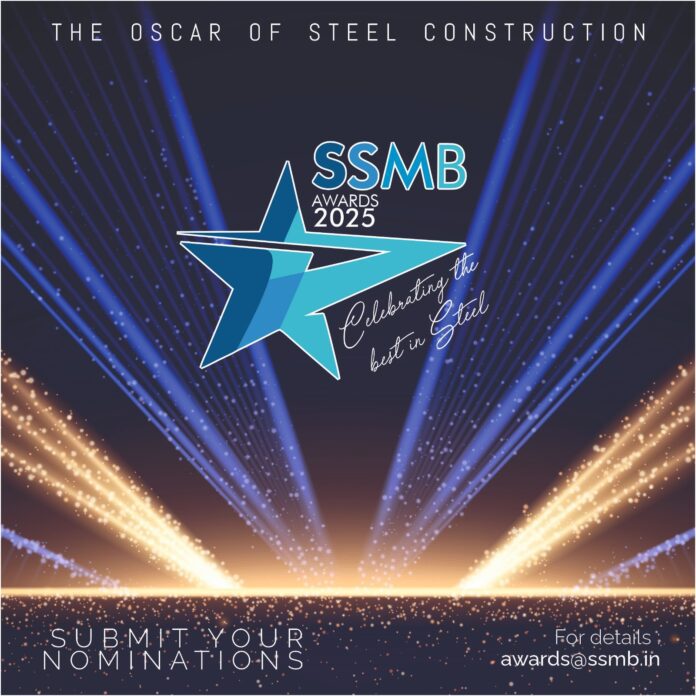Introduction: From industrial design beginnings to architectural innovation, SHOVAN KAR, Design Director & Founding Partner at Design Objects, has redefined how steel can shape spaces, products, and communities. For him, steel is not merely a structural necessity, but a canvas for circular design, rapid execution, and transformative impact. In this conversation, Shovan Kar reveals how the material has shifted from the periphery to the very core of his design practice, unlocking new possibilities for sustainability, scale, and social inclusion.
In what ways does steel help you achieve architectural versatility while supporting your commitment to sustainability?
Steel plays a crucial role in our projects, particularly as we align our designs with the 17 UN Sustainable Development Goals. Many of these emphasise circularity like reuse, repurposing, and recycling, the areas where steel excels. Its recyclable nature allows us to reduce reliance on harmful materials and explore more sustainable, flexible, and innovative design solutions.
How do you strike a balance between aesthetics and functionality when designing with steel?
It begins with a deep understanding of the material. Steel behaves very differently from concrete or any other material for that matter, each with its own constraints and fabrication limits. Years of working with steel have taught us its true capabilities and boundaries. This allows us to push creative limits while ensuring every design remains practical, efficient, and faithful to the material’s strengths.
“Steel holds far more potential than we often realise, especially for creating inclusive, impactful architecture and industrial designs for communities that need it most.”
How does designing with steel align with your approach to sustainability?
Designing with steel has been transformative. We recently built our own studio entirely in steel, a first for us, completing it in just four months. Beyond speed, steel offered durability, adaptability, and long-term value. Its reusability, long lifespan, and efficient execution make it a material we will continue to champion in future projects. We use various grades of steel like mild steel, stainless steel as well for our product designs was well.
What are some common misconceptions about designing with steel?
A frequent misconception is that steel rusts easily and deteriorates quickly. Others see it as inflexible or difficult to work with. In reality, steel has its own unique character. It is ideal for clean, geometric forms, even when organic shapes are not required. With India’s rapid growth, steel’s economy, efficiency, and adaptability make it a perfect fit for modern construction when chosen and detailed correctly.
What are the key challenges in using steel for construction?
Logistics can be a major hurdle, especially in remote or mountainous areas. But once those challenges are addressed, steel’s scalability is unmatched. The bigger goal is making steel relatable and accessible to the public, so it becomes a material of choice for everyday construction.
Can you share an unconventional use of steel in your work?
We once designed a medical device for a US client with a very limited budget. By creatively working with steel, specifically sheet metal, we developed a product that looked and felt almost like plastic after processing. It was cost-effective, versatile, and successfully exported from Bangalore to the US, a proof of steel’s flexibility beyond conventional architecture. The beauty of the design was that it did not require any investment in tooling, which is a big plus to any client dealing with mass production.
How do you approach collaboration with fabricators and engineers?
We work to bridge the gap between design ambition and technical constraints through open dialogue. Our Goldman Sachs project was a highlight, creating a large chandelier-like steel structure with an organic form for a 40m x 25m café space, completed in just six months. The result thrilled the client and was shared globally within their network.
“We see steel not just as a building material, but as a catalyst for speed, adaptability, and sustainable change.”
What advice would you offer young architects exploring steel?
Steel’s potential goes far beyond premium projects. It can transform housing for low-income communities through modular systems, enabling rapid relocation or rehabilitation. Its speed, adaptability, and resilience make it a powerful tool for inclusive architecture. Steel goes beyond just construction, as its use in industrial design has also been widely adapted by many companies and studios such as ours given its incredible versatility.
Any recent advancements in steel technology that excite you?
I am intrigued by lighter steel forms that retain strength. There is still room for research and innovation here, but it is an exciting frontier with the potential to balance aesthetics, efficiency, and performance.
What role will steel play in shaping the future urban landscape?
As India approaches a $5 trillion economy, we must rethink materials that can accelerate growth. With abundant resources, steel is central to building faster, stronger, and more sustainably. It will be a defining force in future-ready infrastructure and urban transformation.
Shovan Kar’s Top 3 Insights on Designing with Steel
- “Think beyond structure. Steel can be furniture, art, shelter, and infrastructure all at once.”
- “It’s reusability and adaptability make it a key ally in sustainable architecture.”
- “The public needs to see steel as relatable and every day, not just premium and industrial.”




